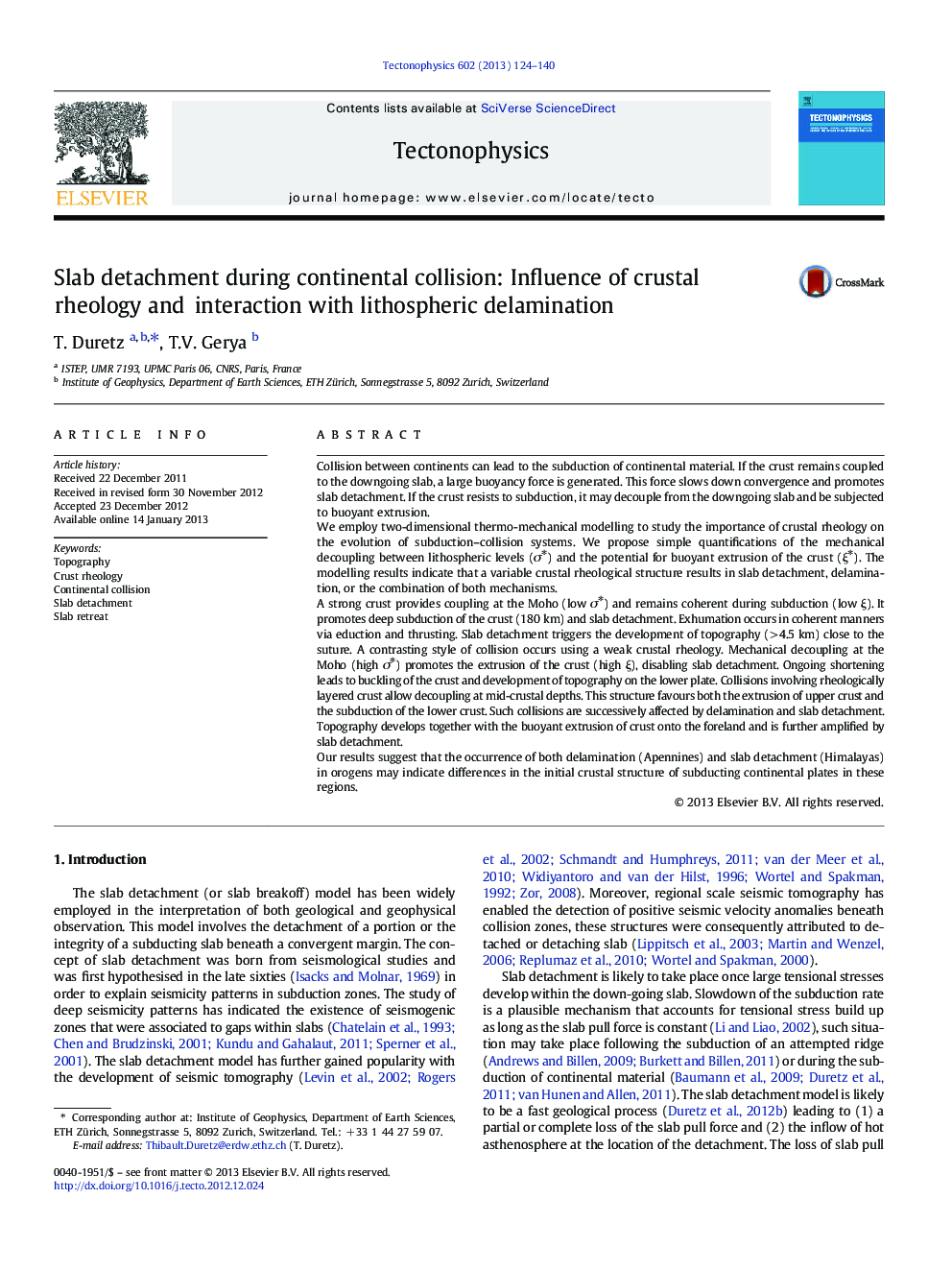| کد مقاله | کد نشریه | سال انتشار | مقاله انگلیسی | نسخه تمام متن |
|---|---|---|---|---|
| 4692248 | 1636785 | 2013 | 17 صفحه PDF | دانلود رایگان |
Collision between continents can lead to the subduction of continental material. If the crust remains coupled to the downgoing slab, a large buoyancy force is generated. This force slows down convergence and promotes slab detachment. If the crust resists to subduction, it may decouple from the downgoing slab and be subjected to buoyant extrusion.We employ two-dimensional thermo-mechanical modelling to study the importance of crustal rheology on the evolution of subduction–collision systems. We propose simple quantifications of the mechanical decoupling between lithospheric levels (σ⁎) and the potential for buoyant extrusion of the crust (ξ⁎). The modelling results indicate that a variable crustal rheological structure results in slab detachment, delamination, or the combination of both mechanisms.A strong crust provides coupling at the Moho (low σ⁎) and remains coherent during subduction (low ξ). It promotes deep subduction of the crust (180 km) and slab detachment. Exhumation occurs in coherent manners via eduction and thrusting. Slab detachment triggers the development of topography (> 4.5 km) close to the suture. A contrasting style of collision occurs using a weak crustal rheology. Mechanical decoupling at the Moho (high σ⁎) promotes the extrusion of the crust (high ξ), disabling slab detachment. Ongoing shortening leads to buckling of the crust and development of topography on the lower plate. Collisions involving rheologically layered crust allow decoupling at mid-crustal depths. This structure favours both the extrusion of upper crust and the subduction of the lower crust. Such collisions are successively affected by delamination and slab detachment. Topography develops together with the buoyant extrusion of crust onto the foreland and is further amplified by slab detachment.Our results suggest that the occurrence of both delamination (Apennines) and slab detachment (Himalayas) in orogens may indicate differences in the initial crustal structure of subducting continental plates in these regions.
► We study the influence of crustal rheology on slab detachment.
► Slab detachment can interact with lithospheric delamination.
► A strong crust favours slab detachment whereas a weak crust inhibits it.
► First order quantification of decoupling and buoyant extrusion are proposed.
Journal: Tectonophysics - Volume 602, 16 August 2013, Pages 124–140
